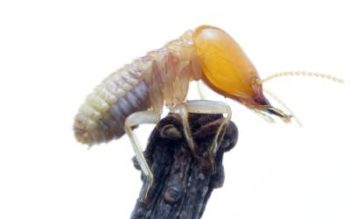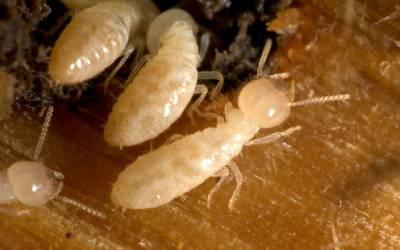 A termite infestation is one of the most feared pest problems in the country. In Eastern & Central Virginia, homeowners and businesses owners start to call us every spring about their potential termite problems. Once the winter starts to wane, Eastern subterranean termites begin to thrive again, taking advantage of all of the moisture that the rainy season has brought. To keep termites out of our homes in the spring, we have to take preventative measures during the winter before any problems start to arise. To learn the best way to termite-proof your property this winter, read on for advice from the experts at Loyal Termite & Pest Control!
A termite infestation is one of the most feared pest problems in the country. In Eastern & Central Virginia, homeowners and businesses owners start to call us every spring about their potential termite problems. Once the winter starts to wane, Eastern subterranean termites begin to thrive again, taking advantage of all of the moisture that the rainy season has brought. To keep termites out of our homes in the spring, we have to take preventative measures during the winter before any problems start to arise. To learn the best way to termite-proof your property this winter, read on for advice from the experts at Loyal Termite & Pest Control!
Why Conduct Termite Prevention in the Winter?
In the case of termites, as well as many other pests, certain seasonal conditions accumulate that allow them to thrive in the next season. Eastern subterranean termites thrive in damp environments because they both soften the ground for tunneling and allow for easy access into wooden structures. Damp wood is damaged wood, and Eastern subterranean termites take advantage of this weakness to plow through in search of healthy wood to feed on and tunnel through. They build networks in the earth to provide pathways from their wooden food source to their underground nests. You will notice mud tubes rise up in your yard if termites are present.
Taking action in the winter to discourage termites from going after your home will prove greatly effective when springtime comes.
Preventing Termites in Eastern & Central Virginia
So, how can we make sure that termites don’t infest our homes this spring? Here are our technicians’ recommended ways to protect your home from termites during the winter:
- Reduce moisture: Make sure that your gutters are in working order and leaving your foundation dry. Also, check around your siding and windows to look for any moisture pooling.
- Store firewood away from your home: Keeping your woodpile at least 20 feet away from your home and elevated off of the ground is a great way to ensure that termites don’t find it. Termite infestations often move from woodpiles to homes.
- Keep mulch away from your foundation: Termites are attracted to many kinds of mulch for their ability to retain moisture. Having this too close to your foundation will give termites a better chance of invading your home.
- Seal any holes and cracks: Your plumbing fixtures, foundation, walls, roofing, and more could have gaps that are allowing termites in. Conduct a thorough home inspection to look for any holes and seal them with a silicone-based caulk.
Professional Help with Termite Prevention
If you feel that you need someone to help with preventative maintenance against termites or would like a professional inspection done to check for termites in your home, look to your local pest control company. At Loyal Termite & Pest Control, we train our termite exterminators to conduct exhaustive WDI (wood-destroying insect) reports and complete termite removal for home and business owners in Eastern & Central Virginia. Don’t wait until it’s too late to prevent termites. Contact us today to receive a free quote!

